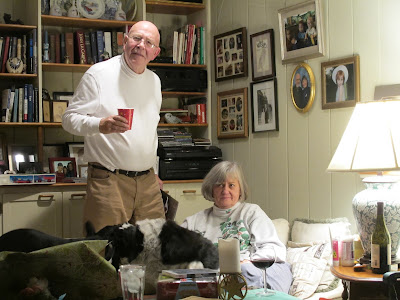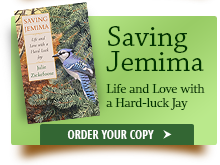December 12, 2021--the next morning.
Written Aug. 21, 2006
Tree
It is foolish
to let a young redwood
grow next to a house.
Even in this
one lifetime,
you will have to choose.
That great calm being,
this clutter of soup pots and books—
Already the first branch-tips brush at the window.
Softly, calmly, immensity taps at your life.
Jane Hirshfield
We planted this willow tree when I was pregnant with Liam. It was about six feet tall, a slender whip, its small leaves backlit by the evening sun. We tried to plant it far enough away from the septic tank that it wouldn't dip in for a drink, far enough away from the deck so it wouldn't touch when it grew up.
We had no idea.
The willow is seven now, Liam is six. He is long and lanky. It is enormous. By next summer, we will be able to reach out from our deck and touch the willow's branches. I've no doubt it will be in the septic tank by then, too. It is full of birds and it buzzes with cicadas. It is a citadel of foliage, a city of birds and insects. It's a habitat on a trunk.

What a metaphor for starting a family, this willow tree. So much bigger, so much grander, so much more wonderful, so much scarier and all-consuming than you ever could have imagined. The willow overspreads half the back yard, at seven. What will it be at 25? Who will Liam, he of the wooden trains, be at 25?

End of Post
So I asked, and how could I know then that this willow, then vibrant, healthy and seemingly intent on taking over the entire backyard, wouldn’t quite make it to 25?
December 11, 2021. At 3 AM I was up, looking at a line of storms on the Weather Channel, stretching from Ontario to southmost Texas. I wondered what fresh hell was being unleashed in that swath. Seventy-six people would lose their lives in Kentucky, and three in Tennessee, from a monster tornado that barreled more than 200 miles in one horrific rampage. I couldn't know that, but I knew this was a real stinker of a storm. It was lying like a nasty python, writhing a little, but not moving east much at all--just slithering away in place.

I padded around the house, guided only by flashing lightning, in my age-old ritual of unplugging things. There’s lots less to unplug now that I don’t watch TV or have a landline or a fax or give a toss about my ancient stereo—let the lightning take it! I unplugged my laptop, looked for Curtis and couldn’t find him, which meant that he was probably in the basement clothes closet, like a smart dog. That was where I ought to be, I thought, but I dragged myself back to bed and fell asleep, to the distant rumble of thunder and the wind tearing at the useless, flapping weatherstrip in my bedroom windows.
On this Saturday morning, I had planned to paint all day on a Christmas commission that’s been eating my time, but I couldn’t settle down. I was so nervous. The wind was wild, wild! and rain was going sideways.We'd been under barrage from the storm-snake since 3 AM, and it was nearly 12 hours later. I put my car in the garage and did little things around the house. I looked at the radar again, to see this storm that wouldn’t leave us alone, and saw a perfectly straight line of orange, like a samurai sword, raking across the Midwest.

And in the next heartbeat here it was, with a white-out of rain and the trees groaning and tossing. I ran from window to window checking on the greenhouse; I ran up to the tower, came back downstairs and it was there in the studio that I heard it. It was a soft fwumpp, not loud enough to jump up to investigate, but resonant, and I would glance out the south window, off the high deck, to see the sky, once blocked, suddenly opened out, and the great black trident trunk of the willow on its side, Just. Like. That.
No fanfare, no crack, no crash, just a muffled sound like someone sliding a couch across carpet, and it was done.

I took a photo of it lying there against the sodden meadow and bruised sky and sent it to Liam and Phoebe and Shila and my three sisters. I had to share it with them first, the way one would share the death of a relative. I feel abashed even writing about it, knowing what happened in Tennessee, Kentucky, and four other states, but here it is, and I need to tell you about it.

The willow had cracked off at the base, but there was barely any root left. This was not a surprise. I knew it was dying, had known it for years. It had stopped growing. I used to have to trim it three times each summer so I could even mow under it without being strangled by its long whippy tentacles. I hadn’t had to trim those whips for the past four years.

My first reaction was gratitude that the giant tree had had the grace to fall sideways, and not crush the deck or the house. After the hollow gut punch, I feel strangely numb about losing this tree. Maybe because I’ve been on deathwatch for so long. But mostly, I think, because I will confess that as a native plant enthusiast, I had never really wanted a weeping willow in the first place. Bill insisted that we plant one for sentimental reasons, because he spent his early years with one at the "Rickety House" in Pella, Iowa, where he was born. I was pregnant with Liam, due to burst in a couple of months, and his insistence wore me down. We went and picked one out at Thomson’s Landscaping. It was a whip about 6’ tall, probably a couple of years old. It had been a terribly dry summer, and there had been periodical cicadas in plague proportions, too. I knew I’d be the one hauling hose out to it, and I’d be the one who picked up countless dropped limbs and mowed under it, too. But we had no sooner finished arguing about what was too close to the septic tank (My position: Any place you could pick is too close to the septic tank to plant a willow) and finally dug the hole and stuck the whip in it, and stepped back to survey our work, than a palm warbler landed in it, wagging its tail! That makes it September, 1999, because September’s when the palm warblers come here. I remember the sun coming through the willow's leaves, and the bird’s tail wagging, and Bill and I took it as a good sign, a very good sign.
Liam was born only a month and change later, on November 8, 1999, and of course we called it Liam’s willow, and I became fond of it in spite of my misgivings about its eventual size and thirstiness. As he grew, long and tall and beautiful, so did the tree. It was a vireo magnet, the warbling and Philadelphia and blue-headed vireos catching in its branches during migration.

Blue-headed vireo, 25 Sept. 2020. Immaculate bird. And I note that even the branch it's on is cracked.
The cedar waxwings adored it, swinging merrily in its flexible top branches, when it had them. Everything wound up in that tree, including the flying squirrels who sailed from there to the deck railing to skitter around and filch sunflower hearts from a feeder we used to keep there.
My boy grew up knowing he had a tree that was special to him, and that is something, and if I regret losing it, it’s because of Liam. “This makes me so sad,” he responded to the photo I sent the day it went down. Me too, son. End of an era. But don’t take it as a sign. Weeping willows grow far too fast, and die too young. It’s just the way they’re built.


I miss the surreal touch the willow lent to the landscape, especially when the gardens were in full, fantasy-land bloom (here, on October 8, 2021). This is one of my last photos of the tree, and you can see the dead top that tells you it’s not going to be photogenic much longer. Even the color of the leaves tells you something you don't want to know.

October 8, 2021

December 11, 2021
Change of seasons, change of backdrop, pretty draconian.
Still, I’ve checked a few times, and my sadness on losing this tree is not even a pinprick compared to how I felt about losing the centurion red oak that guarded our mailbox. She fell on March 26, 2011. The post is here. http://juliezickefoose.blogspot.com/2011/05/leaning-tree.html
That tree’s death heralded the end of an era, too. I can’t even begin to tell you what all fell with that oak. We were coming back from a huge recording session for our first Rain Crows album, “Looks Like Rain,” when we saw it stretched across the road. But it wasn't just the tree...absolutely everything was changing right beneath our feet. That tree, I wept over for days. I couldn't bear to look at its mighty trunk down on the ground. Strong, tall, beautiful, useful, still willing, but doomed by heart rot. I still grieve her loss, still miss her. What an incredible presence she had, a destination unto herself.
Then...my favorite photo almost ever
Now-thankful to have Curtis and this still-spindly oak child.
The oak that sprang from one of her acorns is growing fast near the very spot she once commanded, and it is a beautiful young tree. I had to cut its protective tomato cage off --I think it's too big to be under threat from the township mowing deck now. Still too small to cast shade, it is hurrying to fill her place in the world.


What will I plant where the willow was? I will think about that. Something native. Something I have always wanted, though I don't yet know what that is. A little grove of serviceberry? More persimmons? Another clump of birches? Something more monumental? Not a redwood, that much poet Jane Hirshfield and I know. Suggestions from tree mavens are welcome.
I've got someone coming to deal with its enormous carcass, and I've asked them to bring a bulldozer, too. It'll be a heck of a day. I have visions of myself trotting in front of the Bobcat, pointing at things that need to be cleared out. There is so very much to do, and a dozer can do in seconds what would take me weeks to clear. I'm looking forward to that. But oh, Liam. I waited for you to get home. I needed another picture.
Then...August 2006






























































Wednesday, December 29, 2021
12 comments